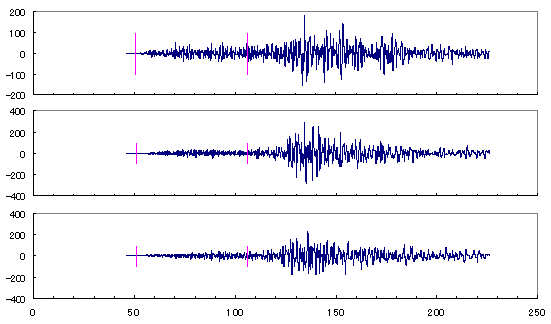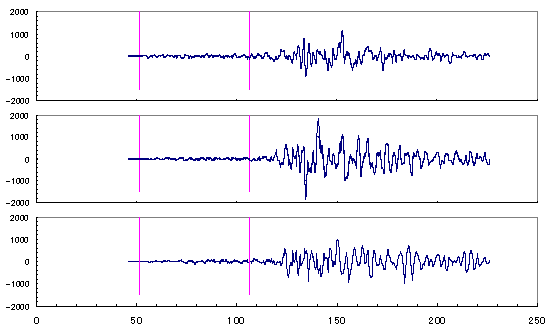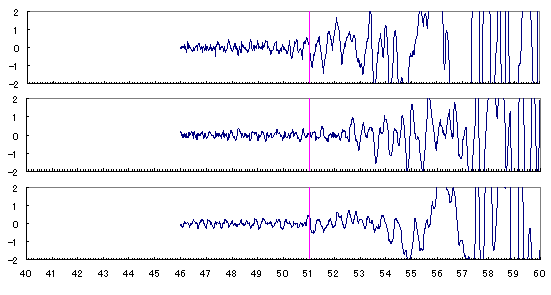|
Preliminary Report: Mexico City UrEDAS detects Colima earthquake on 02:06:35, January 22, 2003 |
|
System and Data Research, Co., Ltd. http://www.sdr.co.jp/ |
|
1. Introduction Wed Jan 21 20:06:35 2003 (local time) Wed Jan 22 11:06:35 2003 (JST) E-mail information for this earthquake was delivered at around 11:08:30 (JST) for a server in Japan. The result of detection is following. Magnitude: M6.8 Azimuth: 280 (deg.) Hypocentral distance: 232 km Depth: 134 km (Between Mexico City and Colima) Hypocentral distance: 442 km Depth:255 km (60 km North East from Colima) Around 20:07:50, the observation station of UNAM near Mexico City detected earthquake motion. Because of more than 400 km hypocentral distance, p-s time, duration from the P wave detection of UrEDAS to large earthquake motion, seems more than one minute. See following UrEDAS waveform. UrEDAS says that, at the time of the preliminary tremor detection, occurrence of M6.8 earthquake hundreds km west was estimated. And after one minutes, at the time of the large earthquake motion detection, the location became clear to the near of Colima. Mexico City UrEDAS is on the way of adjustment and not tuned to detect only for large events. However, from the detect situation of this earthquake, it is clear to be effective to decrease the hazard. Of course, although suitable employment is required, while correcting the parameters immediately from now on and raising presumed accuracy, it is considered that the employment method wants to talk with CIRES. 3. Waveforms Following figures show the waveforms of Mexico City UrEDAS with the order of UD, NS and EW in 1/1000 cm/sec. Time scale in seconds is counted from 02:07:00 (UTC) and may include error of about 0.5 sec in maximum. The lines around 51 sec and 105 sec indicate P wave detection and S wave detection, respectively. These waveforms show the first preliminary motion is relatively small for four seconds and after this, large P wave motion was arrived. UrEDAS detected this preliminary P wave motion and sent the first information after three seconds. And just after S wave detection, secondary information was also sent. The system at CIRES received these information one second later. This S wave detection was 10 seconds earlier than the real S wave arrival. The time with large motion was 40 seconds or more, and it shows this earthquake was a big event, too. A local person at the relatively hard site in the city felt the vibration continued more than two minutes. |
|
Waveform of the 02:07, January 22, 2003 earthquake observed by Mexico City UrEDAS Short period velocity waveform (1 Hz - 10 Hz) 
Long period velocity waveform (0.1 Hz - 10 Hz) 
Enlarged short period velocity waveform (1 Hz - 10 Hz) 
|
